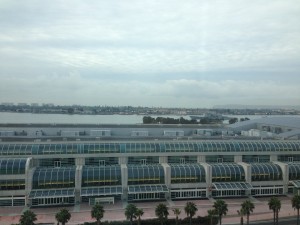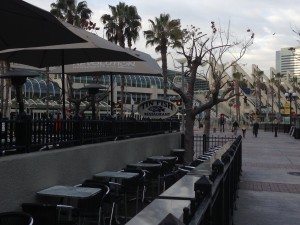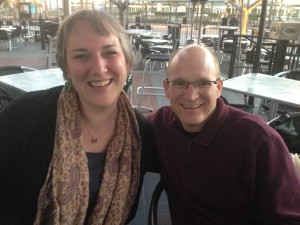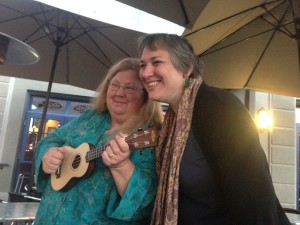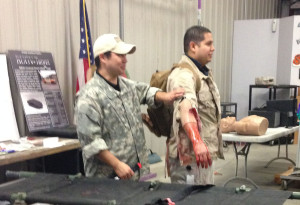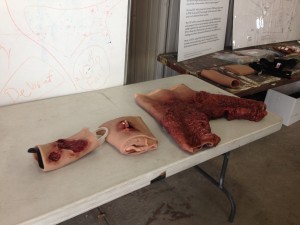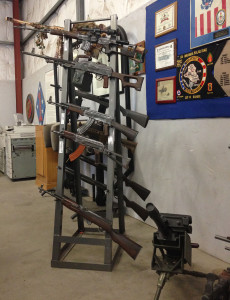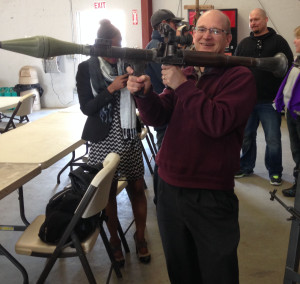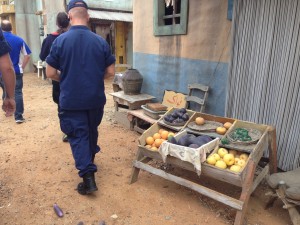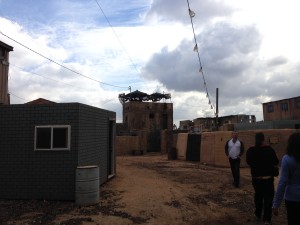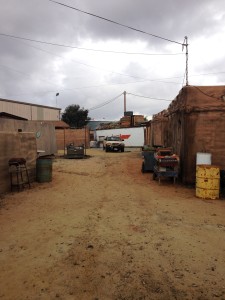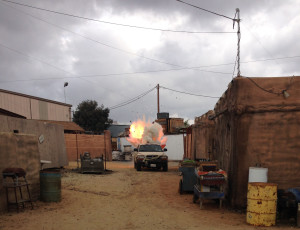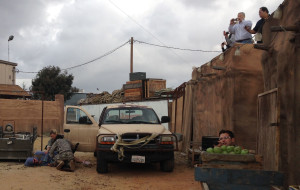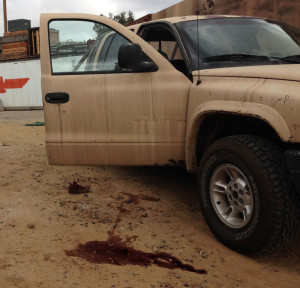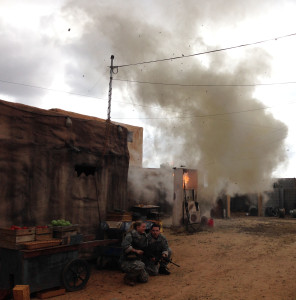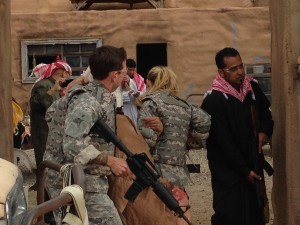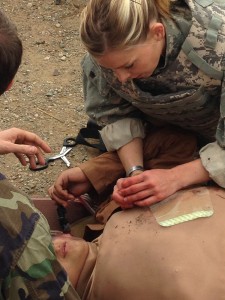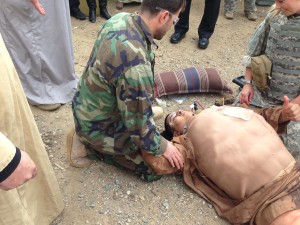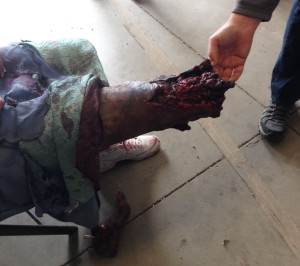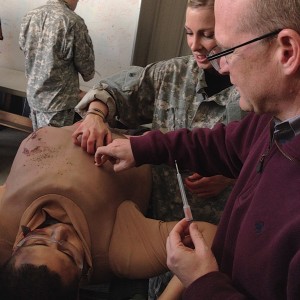Experiencing a Realistic Simulation at Training2014
(Scroll Down to Simulation, if you want to get right the simulation part of this post.)
Last week, I had a wonderful time at Training 2014. The event was, as usual, a lot of fun. Especially since I had to miss TechKnowledge. So here is a recap and a story of the hyper-realistic simulation we got o experience while at the conference.
The venue in San Diego is great. My hotel was right near the water as is the convention center so the view is nice.
There was a great little place right by the convention center were we hung out with some good friends. It was a great break from the cold weather back East.
I was able to catch up with Kevin Thorn (not pictured), Jane Bozarth and Trish Uhl. Yes we do talk about geeky training stuff as well as everything else under the sun.
Simulation
After the conference was over, we took a tour of Strategic Operations Training Center which was, as advertised, hyper-realistic.
We started with a briefing that explained some of the tools they use for the simulation and why. The main purpose is to provide military personnel and first responders with training that has almost 100% fidelity yet is safer than the actual environment. The company helps war fighters and others to prepare for chaos, uncertainty and the fog of operations in hostile environments. The goal is to simulate, as closely as possible the injuries, explosions and situations using Hollywood special effects, actors and set creation. Having been on several bases and seeing first hand live fire training exercises, the simulated environment was impressive.
There were also a number of realistically weighted guns to give the learners a feel for real weapons and a visual connection to the type of weapons that can be used by adversaries.
I chose to go big!
After the de-briefing, we headed to the battlefield to take our observational positions. Some groups were on the rooftops and others were at ground level preparing for the simulation.
Note that to make the simulation and village as realistic as possible, fruit and vegetables were added to the set. It is the details that make a simulation realistic. Pay attention to details when designing a simulation.
Next we watched a scene unfold, the soldiers talk to the locals.
Next the there is gun fire and a truck comes flying in from nowhere.
All of the sudden, the truck explodes.
The driver is killed instantly and a female passenger is badly injured, the soldiers rush to her aid.
Look carefully below the door of the truck and you will be able to see both a pool of blood and the foot that was blown off in the explosion.
Chaos ensues as gun fire erupts and locals are screaming, smoke is everywhere. A small group deploys to deal with the insurgents.
Suddenly another explosion as a gas pump is hit. The loud noise startles the observers and a man is injured in the blast.
The victims of the two explosions were stabilized and treated just as they would be on the battle field. After the scene, we got to speak to the actors. The women who “lost her foot” in the battle is an actual amputee and places a fake, wounded piece on her real leg to fake the injury in the simulation. Highly realistic. Even down to the powder wounds on hands.
After the simulation, we were able to experience the “cut suit” it is a suit worn by the actors over their own body but the cut suit can be stabbed, poked and cut without hurting the actor.
It was a great immersive environment. The testimonials from attendees of the program are all positive and point to how realistic and chaotic the actual training is. The idea is to allow the trainees to experience as close to the real thing as possible in a safe, realistic environment.
Lessons Learned
Take aways for when you want to develop hyper-realistic training whether in the classroom or online.
- Pay attention to small details. The fruit, the foot and the blood all add to the realism of the event.
- No learning objectives were given prior to the event, instead a realistic objective–talk to locals about a new health program–was given. The battle then unfolded.
- Use surprise. A key element in this exercise is to surprise the learner so he/she reacts as trained (or doesn’t and needs more training.
- Pay attention to all senses, sight, sound, smell, touch. All of these sense were engaged during the simulation. You may not be able to do this for all situation but don’t forget sound in an online simulation.
- This training saves lives. The hyper-realistic training is effective. It would also be effective for sales, compliance, safety and other trainings. Don’t dismiss hyper-realistic training because you are not dealing with life and death. If it is important, then this type of training cannot be equaled.
Posted in: Out and About, simulation
Leave a Comment (0) ↓
